Hiking used to be a summer activity for me, but in the four seasons of Boulder, Colorado, with hiking clubs active year-round, I’ve slowly started to change my mind and gotten accustomed to winter hiking. Last Sunday I put my winter hiking skills to the ultimate test by attending the Boulder Hiker Chicks‘ Winter Trifecta, a tour of Boulder’s three local peaks.
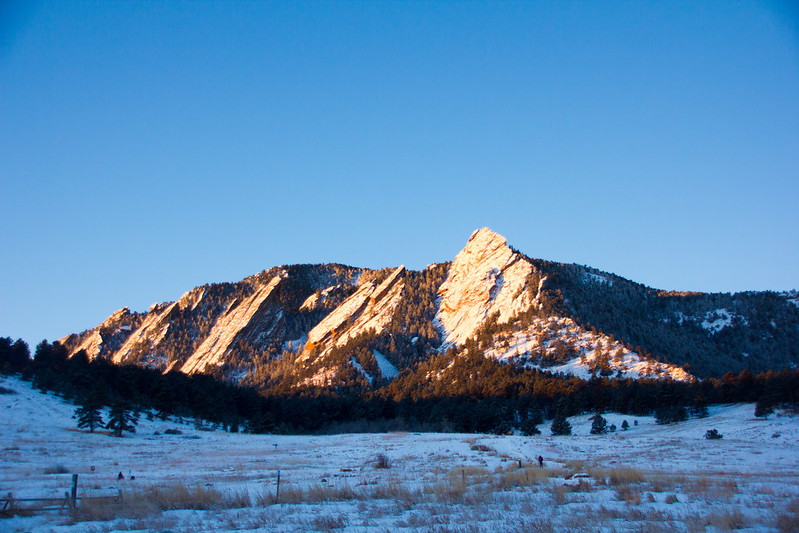
Rather opt for more clothes than less.
It was around -12C when we started the hike, but the forecast said the temperature would rise above 0 in the afternoon. On the other hand, we’d be walking along peaks and ridges with a chance of high winds. And then again, you’ll get warm when you walk. So what to wear on a winter hike?
I wore a technical T-shirt underneath, because earlier I’d hiked in wintertime with a cotton shirt, sweated it while climbing, and then shivered coming down. Not an experience I’d like to repeat! On top of that, I wore a NorthSky microfleece and a softshell jacket. Because I always take something extra with me in case I get cold, I also packed a Patagonia vest because of its light weight. I ended up putting the vest at the first summit and wearing it for the remainder of the hike, instead removing my jacket when needed.
On my legs I wore Patagonia leggings for warmth and waterproof pants on top of them, plus good quality hiking socks. For my hands, I only had a pair of knit gloves, which proved to be sub optimal when I had to use my hands to support my climbing efforts. Waterproof gloves would have been a better choice in the snow.
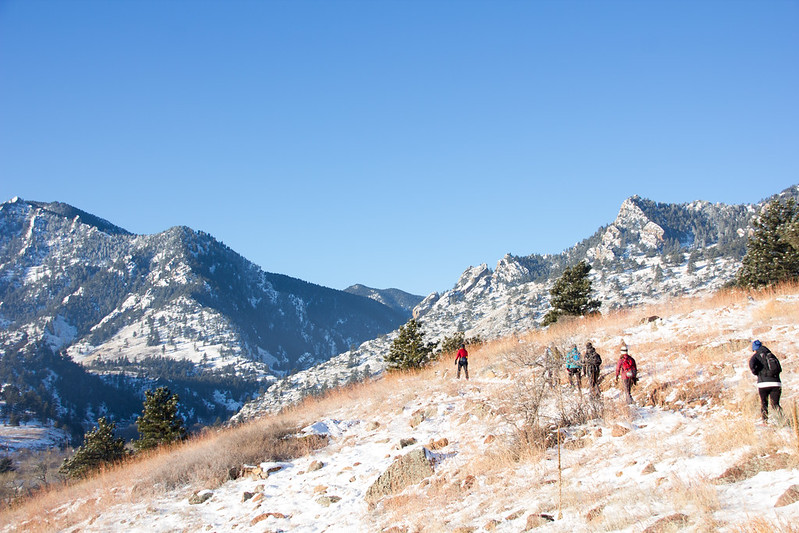
We met up with our hiking group at Mesa Trailhead at 8am in the morning, and after a short regrouping we started off to our first goal, South Boulder Peak (2606m). In Boulder’s hiking terminology, “trifecta” means the route that passes through Boulder’s three big local peaks. After South Boulder Peak, we’d continue on to Bear Peak (2579m) and from there on traverse to Green Mountain (2482m).
Completing this route from South to North meant that we’d be climbing to the highest peak right in the beginning. The route through Shadow Canyon felt like it took forever, but finally we started seeing remnants of a past forest fire around us, which meant the peak wasn’t far. The horizon also opened up for a view of surrounding Front Range.
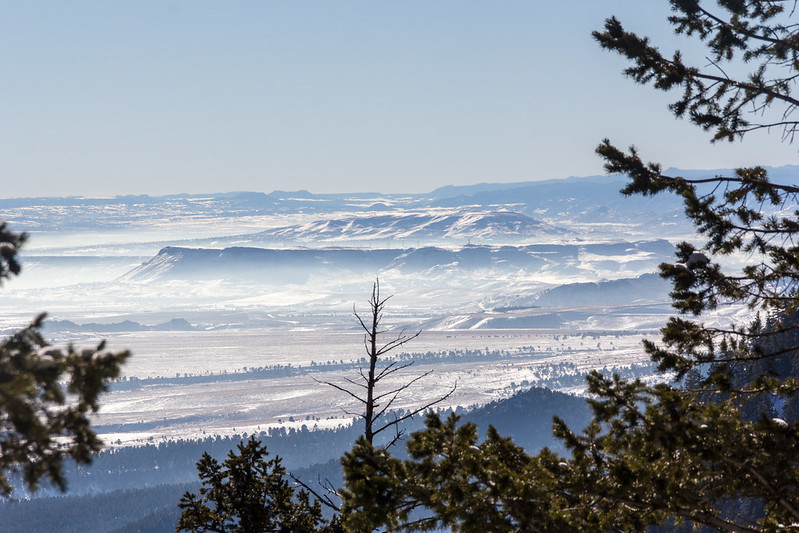
What food and drink to pack for a day’s winter hike
On day hikes, my nutrition is based on a cheese sandwich packed in a ziplock. Since this would be much more demanding than your average day hike, I needed additional sources of energy. I ended up packing:
- Half a bag of trail mix, which I snacked on whenever I felt low on energy on the long climbs up.
- Mini bag of chips. Chips seem to be a big thing with American hikers, as everybody instructed me to pack them before the hike, and bags were passed around at every peak by fellow hikers. I ended up not eating mine, but it’s a nice backup to have.
- As a backup, one Clif Bar. In case I get lost or sprain my ankle, or something, it’s good to have more food than you plan on eating.
In addition, somebody passed around some Clif BLOKS before the last climb. It was either the caffeine-infused snack or the great company, but the last climb wasn’t half as bad as I thought it would be.
“Take snacks of every kind, so you’ll always have something you feel like eating on the trail.”
During summer hikes, I drink around half a liter of water per hour, but the winter’s a completely different thing. I packed 1,5 liters with me and ended up drinking less than a liter during the whole hike. One pro-tip for winter hikes: Don’t fill your water bottles with cold water straight from the fridge. It’s not fun to drink water that’s turned into ice slush.

The Ten Essentials
This should be nothing new to anyone who hikes, but there’s a list of 10 essentials you should always pack with you for longer hikes in the backcountry. Normally for a hike on Boulder’s local mountains, I wouldn’t bother with all of these, but this hike was a full day, longer than usual, and sometimes a little far from civilization, so it’s better to be safe than sorry. What I packed for my winter hike was:
- Topographical map. I prefer National Geographic maps for hiking in the US. In addition, I had a compass, which I ended up not using on the well marked trails, but which could have come in handy if I had lost my way.
- Sunglasses and sunscreen. Colorado sun and the snow pretty much make these mandatory. I still managed to forget both but luckily another hiker had an extra pair of glasses and people passed sunscreen around on the way.
- Extra clothing. That vest, which ended up not being extra at all.
- Headlamp. Our intention was to get back before dark, and while I managed to do that, part of the group got lost and would have had to hike back in the dark if one person hadn’t gone to pick them up with a car from an earlier trailhead. Delays are always possible, so never trust the sun.
- First aid kit. I’ve filled a small beauty box with bandaids, desinfection liquid and other first aid essentials. My husband added in some M&Ms for good measure.
- Extra food...
- …and extra water.
- Space blanket, in case you break a leg and need to wait for hours for help.
Yep, there’s only eight things there. I left out two, another by accident and the other on purpose. I forgot to pack my Swiss army knife – I’ve needed it every now and then, so it’s good to have – and I left out matches on purpose, because Boulder’s Open Space & Mountain Parks prohibits fires.

Don’t slip!
Everybody has their own taste in hiking boots. High hiking boots are recommended, but since I’ve never sprained my ankle, I prefer the more light-weight low boots from SCARPA. When hiking up mountains, I always use approach shoes that have a sole with better traction. They’re not as comfortable to walk in as normal hiking shoes, which is why I don’t wear them on flat hikes.
On winter, you need traction on your shoes if you’re going to hike any kind of grades. I wore ICETrekkers Diamond Grips, which I’ve found work well on ice, but in slippery snow they were no match for Kahtoola Microspikes that many others were using. In the snow, gaitors would have also come in handy, and while the trails were trampled enough, I got some snow up my shoes a couple times while stepping on the side of the trail to give way to fellow hikers.

The weather gods favored us on our trip, and even though wind on Bear Peak was brutal, I’d say overall the weather was excellent, with blue skies holding on for the whole day. Perfect day for a hike, that is!
We saw other hikers on the way, but even more so we passed (or were passed by) trail runners who hopped around the peaks in shorts. I would never be able to run up or down those mountains in winter – up because of my fitness level, and down because I’d be too scared of slipping.
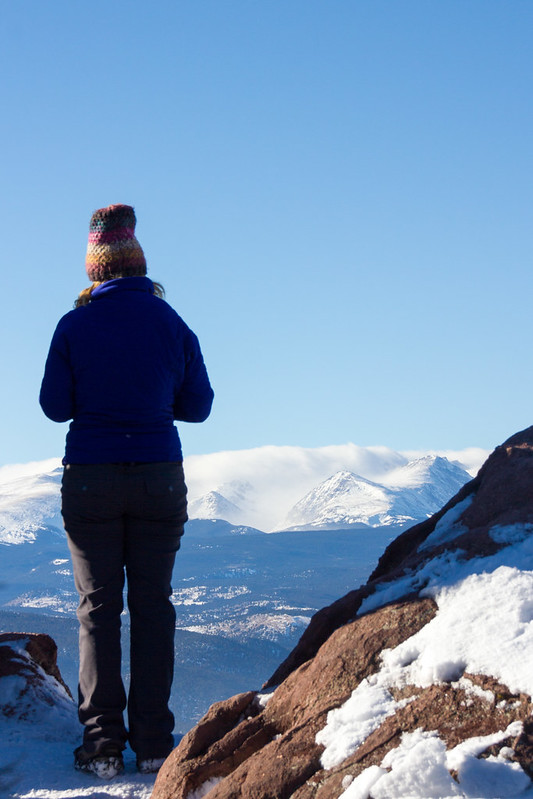
On top of Green I already felt my feet hurting, and the next day I had trouble moving, but my spirits were high the whole time. Fastest hikers in our group did the route in around seven hours, while I took around eight for the whole trip. 11 miles, over 4000 feet of elevation gain. I had really earned that burger at Chautauqua Dining Hall!
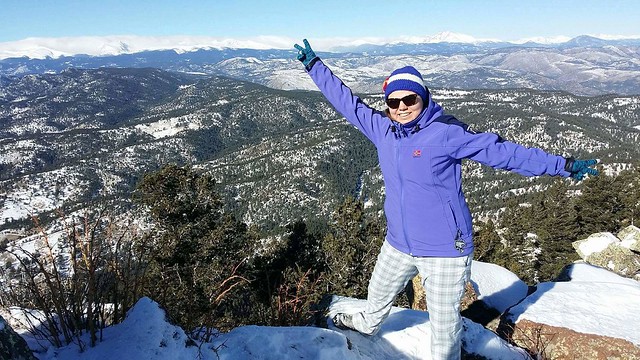
Happy hiking!

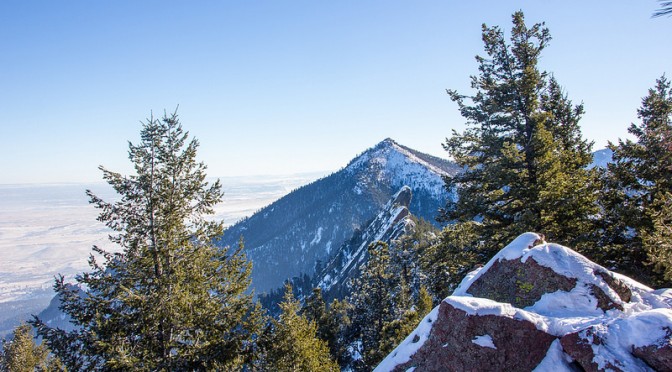

Great post! Love reading your perspective. Cheers!
Nice article! and Congrats on your accomplishment!
Great post! Well written ten essentials!